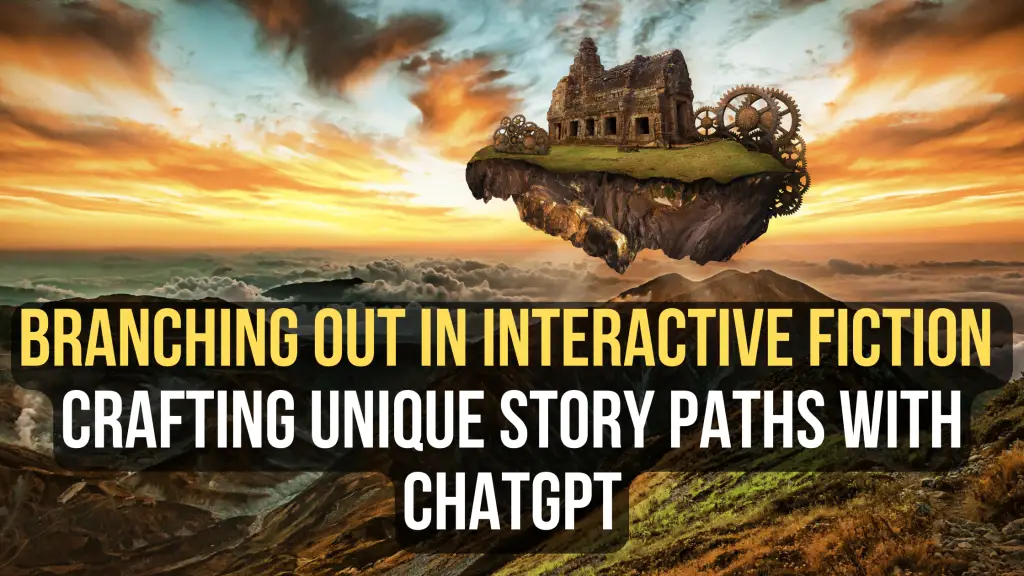ChatGPT in Gaming: Creating Dynamic and Interactive Narratives

The integration of ChatGPT (Chat Generative Pre-trained Transformer) into the gaming industry promises to revolutionize storytelling by enabling the creation of dynamic and interactive narratives that adapt to player choices and actions in real-time. Here’s how ChatGPT transforms the gaming landscape:

Personalized and Engaging Storylines: ChatGPT empowers players to shape the narrative by providing unique responses and branching dialogue options. Each player’s choices influence the story’s progression, creating personalized experiences tailored to their preferences. This enhanced level of player agency fosters a deep connection to the game world and its characters.

Dynamic NPC Interactions: ChatGPT brings non-player characters (NPCs) to life by allowing them to engage in meaningful conversations. Players can interact with NPCs, ask questions, and receive nuanced responses based on their knowledge and relationships. This creates a sense of immersion and realism, making the game world feel more alive and responsive.
Adaptive Environments: ChatGPT enables game environments to evolve dynamically based on player actions. The game world can adapt to decisions made, influencing the appearance, accessibility, and behavior of various elements. Players witness the consequences of their choices, fostering a greater sense of ownership over the game’s narrative.
Procedural Content Generation: ChatGPT can generate procedurally generated content, such as quests, dungeons, and puzzles. This ensures constant novelty and surprises, keeping players engaged over extended game sessions. The AI’s ability to create unique content on the fly allows for endless replayability and exploration.
Improved AI-Powered Enemies: ChatGPT empowers non-player enemies with enhanced AI capabilities. Enemies can analyze player behavior, predict actions, and adjust their strategies accordingly. This creates more challenging and engaging combat encounters, requiring players to adapt their tactics and strategize effectively.
In summary, ChatGPT’s integration in gaming unlocks unprecedented potential for creating dynamic and interactive narratives. Players can now experience tailored storylines, build deep connections with NPCs, shape the game world, explore procedurally generated content, and engage in enhanced AI-driven gameplay. This transformative technology elevates gaming from a passive experience to a truly interactive and immersive art form.## Chatgpt in Gaming: Creating Dynamic and Interactive Narratives
Executive Summary
ChatGPT has emerged as a groundbreaking advancement in natural language processing, with the capability to revolutionize the gaming industry. Its unparalleled text generation and conversational skills empower game developers to craft captivating and immersive narratives that adapt and respond to player choices in real-time. This article delves into the multifaceted applications of ChatGPT in gaming, exploring its potential to enhance gameplay, drive emotional engagement, and unlock novel possibilities for storytelling.
Introduction
The gaming landscape is constantly evolving, with players demanding experiences that transcend mere entertainment and delve into the realm of interactive storytelling. ChatGPT presents an unprecedented opportunity for game developers to meet this demand by weaving intricate narratives that intertwine seamlessly with player agency.
FAQs
-
What are the core strengths of ChatGPT in gaming applications?
- Natural language generation: ChatGPT can produce vast amounts of high-quality text, enabling the creation of immersive storylines and dynamic dialogue.
- Conversational capabilities: ChatGPT fosters natural interactions between players and game characters, enhancing the sense of presence and emotional connection.
- Real-time adaptation: ChatGPT can process player inputs and adapt the narrative accordingly, fostering a unique and tailored experience for each player.
-
How can ChatGPT improve the quality of storytelling in games?
- By creating dynamic narratives that adapt to player choices, ChatGPT ensures that each playthrough is unique and engaging.
- By generating rich and compelling dialogue, ChatGPT enhances the characters’ depth and fosters emotional connections with players.
- By understanding player preferences, ChatGPT can tailor the narrative to resonate with their interests and create a more immersive experience.
-
What are some practical examples of ChatGPT’s implementation in games?
- In role-playing games, ChatGPT can generate quests, dialogue, and character backgrounds that adapt to player actions.
- In action-adventure games, ChatGPT can create dynamic environments that respond to player exploration and provide real-time hints.
- In narrative-driven games, ChatGPT can craft branching storylines that offer multiple endings based on player choices.
Top 5 Subtopics
1. Adaptive Narratives
- Definition: ChatGPT enables narratives that change and evolve based on player interactions, creating a unique and tailored story for each player.
- Important Pieces:
- Non-linear storytelling: ChatGPT can generate branching storylines with multiple paths and outcomes, empowering players with agency.
- Dynamic dialogue: ChatGPT can adapt dialogue to player choices, creating the illusion of intelligent characters who respond appropriately.
- Player-specific narratives: ChatGPT can tailor the story to fit a player’s unique playstyle and preferences, ensuring a highly personalized experience.
2. Enhanced Character Interactions
- Definition: ChatGPT allows for natural and engaging conversations between players and game characters, fostering emotional connections and deepening immersion.
- Important Pieces:
- Personalized dialogue: ChatGPT can generate unique dialogue for each character, reflecting their distinct personalities and relationships with the player.
- Real-time responses: ChatGPT can respond to player inputs in real time, allowing for fluid and dynamic conversations.
- Emotional depth: ChatGPT can generate dialogue that conveys a wide range of emotions, creating characters that feel relatable and genuine.
3. Immersive Gameplay
- Definition: ChatGPT empowers games to adapt their environments and challenges based on player actions, creating a highly immersive and responsive gameplay experience.
- Important Pieces:
- Procedurally generated environments: ChatGPT can create and modify game worlds dynamically, ensuring continual exploration and discovery.
- Real-time challenges: ChatGPT can generate dynamic challenges that respond to player progress and abilities, providing a sense of continual growth and engagement.
- Adaptive gameplay: ChatGPT can adjust gameplay difficulty and mechanics based on player skill and preferences, delivering a tailored experience that is both challenging and enjoyable.
4. Personalized Storytelling
- Definition: ChatGPT allows games to cater to individual player preferences and interests, creating personalized and memorable narratives tailored to each player.
- Important Pieces:
- Player preference tracking: ChatGPT can learn and adapt to player preferences over time, offering tailored storylines and experiences.
- Adaptive dialogue: ChatGPT can modify dialogue based on player personality and interests, creating interactions that resonate deeply.
- Customized narratives: ChatGPT can create narratives that align with player choices and aspirations, fostering a sense of ownership and investment in the story.
5. Novel Storytelling Possibilities
- Definition: ChatGPT opens up new possibilities for storytelling in games, breaking free from traditional narrative structures and empowering players to shape their own experiences.
- Important Pieces:
- Non-linear gameplay: ChatGPT allows for non-linear gameplay, where players can explore different storylines and outcomes based on their actions.
- Player-created content: ChatGPT can enable players to create and share their own stories and content, fostering community involvement and extending the game’s lifespan.
- Experimental narratives: ChatGPT encourages experimentation with new narrative forms and techniques, allowing developers to push the boundaries of interactive storytelling.
Conclusion
The integration of ChatGPT into gaming is poised to revolutionize the way we experience interactive narratives. Its ability to generate dynamic and adaptive storylines, enhance character interactions, personalize gameplay, and unlock novel storytelling possibilities empowers developers to create the most immersive and engaging games ever. As ChatGPT continues to evolve, the future holds limitless potential for crafting gaming experiences that transcend boundaries and captivate players like never before.
Keyword Tags
- ChatGPT
- Natural Language Processing
- Conversational Games
- Dynamic Narratives
- Personalized Storytelling

